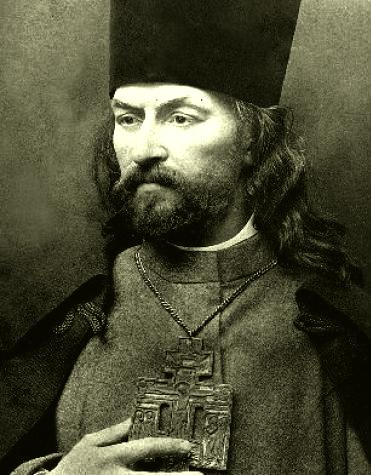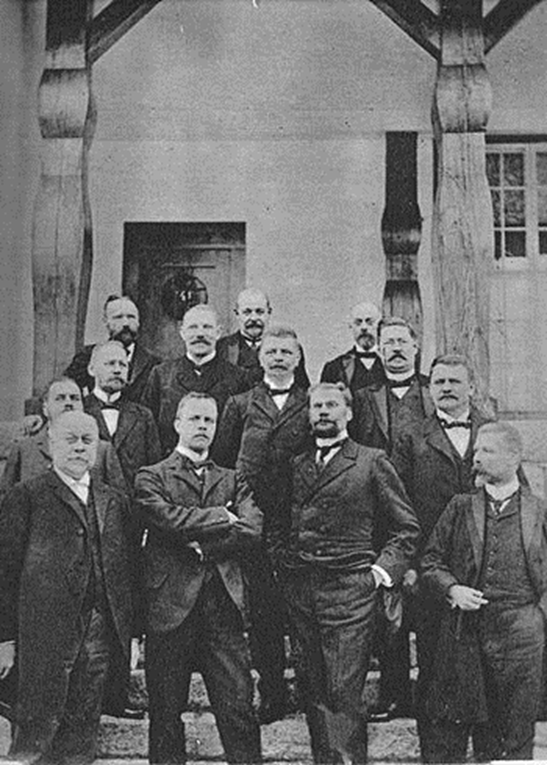|
1905 Russian Revolution
The Russian Revolution of 1905,. also known as the First Russian Revolution,. occurred on 22 January 1905, and was a wave of mass political and social unrest that spread through vast areas of the Russian Empire. The mass unrest was directed against the Tsar, nobility, and ruling class. It included worker strikes, peasant unrest, and military mutinies. In response to the public pressure, Tsar Nicholas II enacted some constitutional reform (namely the October Manifesto). This took the form of establishing the State Duma, the multi-party system, and the Russian Constitution of 1906. Despite popular participation in the Duma, the parliament was unable to issue laws of its own, and frequently came into conflict with Nicholas. Its power was limited and Nicholas continued to hold the ruling authority. Furthermore, he could dissolve the Duma, which he often did. The 1905 revolution was primarily spurred by the international humiliation as a result of the Russian defeat in the Russo-Japa ... [...More Info...] [...Related Items...] OR: [Wikipedia] [Google] [Baidu] |
Bloody Sunday (1905)
Bloody Sunday or Red Sunday ( rus, Крова́вое воскресе́нье, r=Krovávoe voskresénje, p=krɐˈvavəɪ vəskrʲɪˈsʲenʲjɪ) was the series of events on Sunday, in St Petersburg, Russia, when unarmed demonstrators, led by Father Georgy Gapon, were fired upon by soldiers of the Imperial Guard as they marched towards the Winter Palace to present a petition to Tsar Nicholas II of Russia. Bloody Sunday caused grave consequences for the Tsarist autocracy governing Imperial Russia: the events in St. Petersburg provoked public outrage and a series of massive strikes that spread quickly to the industrial centres of the Russian Empire. The massacre on Bloody Sunday is considered to be the start of the active phase of the Revolution of 1905. In addition to beginning the 1905 Revolution, historians such as Lionel Kochan in his book ''Russia in Revolution 1890–1918'' view the events of Bloody Sunday to be one of the key events which led to the Russian Revolution ... [...More Info...] [...Related Items...] OR: [Wikipedia] [Google] [Baidu] |
Kagal (Finnish Resistance Movement)
In the history of Finland, the Kagal was a resistance movement that existed before the 1905 Russian Revolution and founded under the period of Russian oppression, in resistance to the oppressive government of Governor-General Nikolai Bobrikov which actively conducted Russification of Finland. The name (Finnish ''Kagaali'', Swedish ''Kagal'') comes via Russian (hence the -g- for an original -h-) from the Hebrew word ''qahal'', (congregation'', ''assembly). The word was a mocking name used by Russian conservative newspapers as a means of ridicule when referring to the anti-government activity in Finland. In the original meaning, Kagal/Kahal referred to a central body for the Jewish congregations of Russia. The central character of the Kagal is thought to have been Leo Mechelin, an independent liberal, but notable lead characters also included Carl Mannerheim (older brother of Marshal of Finland Carl Gustaf Emil Mannerheim), Adolf von Bonsdorff, Ernst Estlander, J. N. Reuter, A ... [...More Info...] [...Related Items...] OR: [Wikipedia] [Google] [Baidu] |
Labor Unions
A trade union (labor union in American English), often simply referred to as a union, is an organization of workers intent on "maintaining or improving the conditions of their employment", ch. I such as attaining better wages and benefits (such as holiday, health care, and retirement), improving working conditions, improving safety standards, establishing complaint procedures, developing rules governing status of employees (rules governing promotions, just-cause conditions for termination) and protecting the integrity of their trade through the increased bargaining power wielded by solidarity among workers. Trade unions typically fund their head office and legal team functions through regularly imposed fees called ''union dues''. The delegate staff of the trade union representation in the workforce are usually made up of workplace volunteers who are often appointed by members in democratic elections. The trade union, through an elected leadership and bargaining committee, ... [...More Info...] [...Related Items...] OR: [Wikipedia] [Google] [Baidu] |
Imperial Guard (Russia)
The Russian Imperial Guard, officially known as the Leib Guard (russian: Лейб-гвардия ''Leyb-gvardiya'', from German ''Leib'' "body"; cf. Life Guards / Bodyguard) were military units serving as personal guards of the Emperor of Russia. Peter the Great founded the first such units following the Prussian practice in 1683, to replace the politically motivated Streltsy. The Imperial Guard subsequently increased in size and diversity to become an elite corps of all branches within the Imperial Army rather than Household troops in direct attendance on the Tsar. Numerous links were however maintained with the Imperial family and the bulk of the regiments of the Imperial Guard were stationed in and around Saint Petersburg in peacetime. The Imperial Guard was disbanded in 1917 following the Russian Revolution. History Peter the Great first established the two senior units of the eventual Imperial Guard, the Preobrazhensky and Semyonovsky infantry regiments. Peter formed ... [...More Info...] [...Related Items...] OR: [Wikipedia] [Google] [Baidu] |
Sidney Harcave
Sidney S. Harcave (September 12, 1916 – October 24, 2008) was an American historian who specialised in Russian history.Mark Kulikowski, 'Sidney S. Harcave, 1916-2008', ''Slavic Review'', Vol. 68, No. 3 (Fall, 2009), p. 742. He was born in Washington, D.C. and was educated at the City College of New York, where he graduated with a BA. Under the supervision of Samuel N. Harper at the University of CHicago, Harcave earned his PhD in 1943. During World War II, he became a foreign area specialist for the Foreign Broadcast Intelligence Service and an analyst for the Office of Strategic Services and the United States Department of State. After the war, Harcave taught at the University of Wyoming and Champlain College. During 1950–1951, he was a member of the Harvard Refugee Interview Project, which gave him an insight into the Soviet regime. He used this information for his 1954 work, ''Structure and Functioning of the Lower Party Organizations in the Soviet Union''. His college textb ... [...More Info...] [...Related Items...] OR: [Wikipedia] [Google] [Baidu] |
October Revolution
The October Revolution,. officially known as the Great October Socialist Revolution. in the Soviet Union, also known as the Bolshevik Revolution, was a revolution in Russia led by the Bolshevik Party of Vladimir Lenin that was a key moment in the larger Russian Revolution of 1917–1923. It was the second revolutionary change of government in Russia in 1917. It took place through an armed insurrection in Petrograd (now Saint Petersburg) on . It was the precipitating event of the Russian Civil War. The October Revolution followed and capitalized on the February Revolution earlier that year, which had overthrown the Tsarist autocracy, resulting in a liberal provisional government. The provisional government had taken power after being proclaimed by Grand Duke Michael, Tsar Nicholas II's younger brother, who declined to take power after the Tsar stepped down. During this time, urban workers began to organize into councils (soviets) wherein revolutionaries criticized the pro ... [...More Info...] [...Related Items...] OR: [Wikipedia] [Google] [Baidu] |




